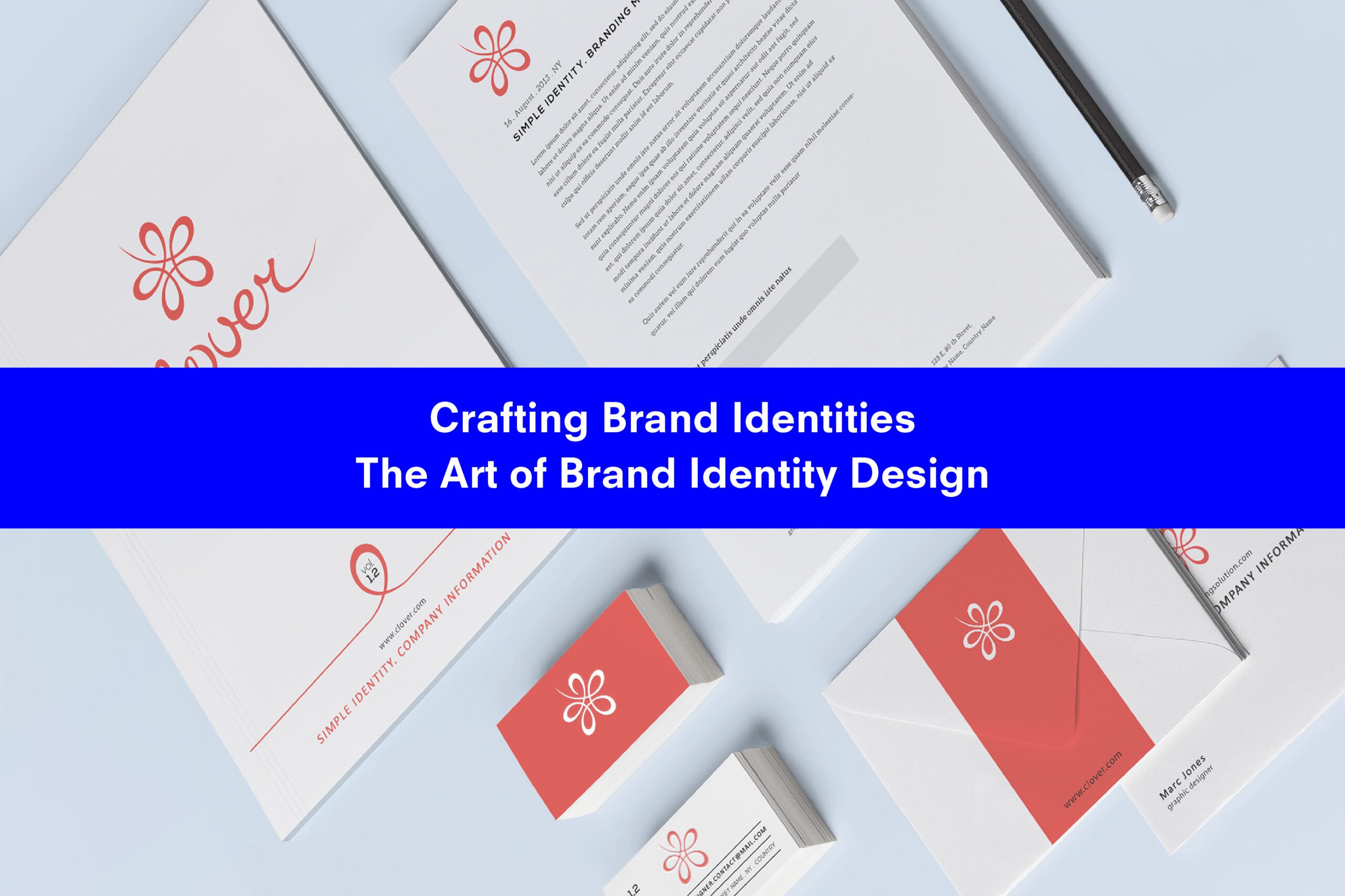Effective branding is the linchpin that can set a company apart from the rest. Think of a brand name, now what was the first thing that you imagined about them? Their logo, colours, an ad perhaps? Most things you will recall are part of the branding for an organization. But brand identity goes beyond colours, type, design, logo, etc. It narrates a compelling storyline and crafts a unique identity for the brand that the users resonate with. Successful branding is one that seamlessly blends design, strategy, and storytelling into one to leave an imprint on the customers.
When strategizing for brand identity, design plays a pivotal role. It works to encapsulate the essence and personality of a brand. Consider the logo, colour palette, type design, symbols, language, and other visual design elements – they all work to convey a brand’s image and message. A well-designed brand logo will be able to encapsulate the brand’s identity.
Also read: Must know modern tips for your design school application
Let’s take the -Versace logo as an example.
The logo features the Medusa head emblem taken from Greek mythology. It offers the brand a symbol of prestige and timelessness. The Medusa head in the logo signifies the brand’s connection with tradition and heritage. The design of the Medusa head is intricate offering a sense of boldness, sensuality, and attention to detail. Offering deep insights into the brand’s willingness to push boundaries, creating alluring designs, and their commitment to high-quality fashion. The logo is designed with versatility in mind which helps the brand to adapt the logo to various contexts, from clothing to accessories and home furnishings.
This example helps us understand the two key elements:
a. The importance of consistency in design leads to a cohesive brand image. A brand identity element like the logo should be consistent and versatile to be used across all touch points. Like a website, product packaging, social media, or other aspects. It helps bring in association with the brand.
b. Effective brand identity will be able to narrate a story that connects the audience with the brand on an emotional or cultural level.
Let’s explore some key elements of the brand identity design:
Logo
Logo’s are central to a brand’s identity design. They are what people will be exposed to the most.
– Keep your logo simple and easy to recognize.
– Make it versatile so it can apply to multiple mediums and channels.
– Consider an evocative design. Does the logo make you think of something?
– Timelessness. Consider if the logo will work as your brand grows over the years.
Also read: The power of visual design journalism telling stories through creative image
For instance, the Disney logo has built a sense of nostalgia and magic around their logo that lasted over the decades.
Typography
Font are powerful beings in their own sense. A typeface can offer a brand instant recognition. Many brands work with just type as their logo design without any symbol. Customers globally recognize the brand with its name and type design.
-Tech Industry makes use of sans-serif fonts to convey a modern and innovative image. Example, Google uses sans-serif font.
-Fashion Industry uses sans-serif fonts to convey contemporary style and elegance. Example, Calvin Klein.
-Luxury brands make use of non-sans-serif fonts to convey a sense of heritage, exclusivity, and sophistication.
-Academic institutions also use non-sans-serif largely to reflect an image of knowledge and tradition.
Colours palette
Colour psychology and dynamics of colour theory are essential to gain an understanding of. For instance, blue expresses calm, and red expresses energy. Keep in mind how different cultures use colours in different ways for their expression on a day-to-day basis. White is considered auspicious for weddings in Western culture and is linked to mourning and death in Asian countries like India.
A colour palette should ensure the brand message is reinformed, evokes the intended emotions, and should have a defined mix of primary and secondary colours.
Coca-Cola’s iconic red has become synonymous with the brand today. It is complimented with a white and black type design. Red for the brand signifies energy, excitement, and passion. Aligning with the brand message of happiness and joy. Their logo transcends cultural differences and evokes a sense of joy and celebration across nations.
Also read: Essential design organizations in India every student must know
Symbols/ Imagery
This section includes building an extended visual language for a brand. These can range from brand symbols, design assets, iconography and supporting graphics. Are you designing a brand that works with a clean design with geometric shapes only? Does the brand’s type design, images, graphics have a shadow, or come with soft curves on their design edges?
For instance, Google’s design elements use soft curves, clean lines, flat design, and minimalistic elements.
Nike’s swoosh supports the brand’s main design elements like its slogan ‘Just do it’ and its overall image of bold typography, and sharp lines with uncluttered layouts.
Now before you get started on these, make sure to answer the three essential questions:
What is the purpose?
The first step should be to establish a clear purpose. A brand purpose should ask why, what, and how.
>Why does the brand exist, and what challenges is it solving? Why is the brand’s product better than the competition?
>What is the vision of the brand, what are the defining products, and what is the key messaging?
>How does the brand plan to communicate, for example, minimalism or maximalism style of visual identity?
Also read: Contemporary Indian design studios and their accomplished work
These questions will help you define the purpose of the brand and what it aims to establish. Let’s take Apple as an example here.
Why? Apple’s purpose is to challenge the status quo and think differently. They aim to empower individuals through their cutting-edge technology and user-friendly design. Making them stand out from their competition.
What? Apple’s vision is to create products powered by technology. Making them intuitive and accessible. Their vision is to be known for their design and performance.
How? The global giant is rooted in minimalism, which is reflected in its clean and simple logo, sleek product design, and seamless user interface. Even their packaging design and ad campaigns are uncluttered and offer simplicity.
What is your market segment?
When the brand purpose is clearly stated, the next step is to understand the market segment. This needs market research to gather information. Data analytics and AI offer brands easy data-driven insights, helpful to build a predictive model. Brands and designers can also focus on their research with primary research methods like focus group studies. A good market research will help to answer questions like:
– Who is your ideal customer persona? What are their demographics and traits? Likes and preferences. What are the main challenges of this customer segment you aim to solve?
This helps you define the personality type of your target customer base.
What is your brand’s personality?
The next step is to build a brand personality. Think of a brand as a person, what would their personality traits be like? A great way to start can be to pick a public figure or personality as an example who embodies the true spirit of a brand. Designers can use that as a reference to build different aspects of a brand personality. This should help to build a few brand attributes, the voice and tone of the brand.
Take Nike as an example. If we were to break Nike down to an individual, its personality traits would range from inspiring, driven, innovative, and determined, energetic, and empowering. This translates through brands’ all brand identity elements. For instance, Nike’s slogan – Just Do It encapsulates their inspiring and empowering personality trait. Their various athlete partnerships with Micheal Jordan, LeBron James, and Serena Williams are some examples of individuals who have pushed the limits to become successful.
The colours, type design, symbols, slogan – they are all that makes a brand personality. Every element of brand identity should be narrating a story.
Also read: Latest trends shaping the automotive design sector



Want to Become a Designer ?
Strate is a unique design school that nurtures your talents as a designer by offering state-of-the art designing courses in Bangalore.
Join Strate